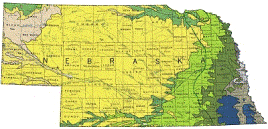United States Geological Survey

United States Geological Survey: Staff Publications
Document Type
Article
Date of this Version
2006
Citation
Published in The Endangered Species Act at Thirty, Volume 2: Conserving Biodiversity in Human-Dominated Landscapes, edited by J. Michael Scott, Dale D. Goble, & Frank W. Davis (Washington: Island Press, 2006), pp. 288-290.
Abstract
The two volumes of The Endangered Species Act at Thirty look backward to evaluate the effectiveness of the act over its first three decades (Wilcove and McMillan 2006; Scott et al. 2006, chap. 2; Goble, this volume; Svancara, this volume; Callicott, this volume; Norton, this volume) and also forward to suggest how it can be used as a cornerstone for conserving biological diversity in increasingly human-dominated landscapes (Davis et al. 2006; Bean 2006). The chapters in part 2 of this volume, for example, appraise the science of the 1990s and 2000s at both the large scale (Lomolino, this volume; Naeem et al. , this volume; Naeem and Jouseau, this volume) and the small (Waples, this volume; Haig and Allendorf, this volume; Reed et al., this volume) and examine the current debate over how science should inform the policy decisions that the act necessarily raises (Doremus, this volume; Ruckelshaus and Darm, this volume). As the authors note, conserving biodiversity involves more than science. The landscapes are, after all, human dominated-and as such must be human managed. The chapters in part 3 evaluate the issues that human management raise, its costs and benefits (Shogren, this volume; Sunding, this volume), emerging mechanisms that may offer tools to reduce the conflict by shifting increasingly to incentives (Scott et al., this volume; Heal, this volume; Fox et al., this volume), and an assessment of the potential to conserve biodiversity across a variety of sea- and landscapes (Armsworth, this volume; Brosi et al., this volume; Beatley, this volume).
Included in
Geology Commons, Oceanography and Atmospheric Sciences and Meteorology Commons, Other Earth Sciences Commons, Other Environmental Sciences Commons

